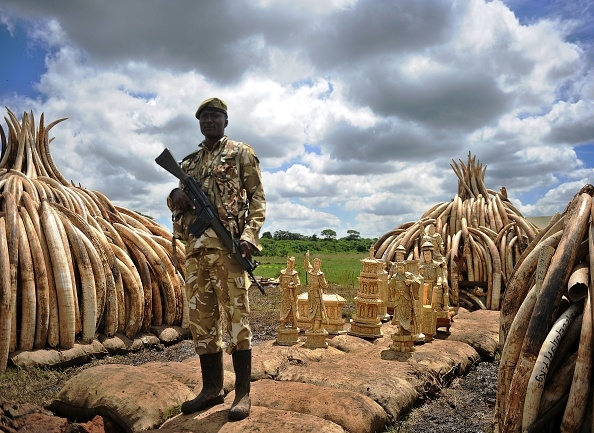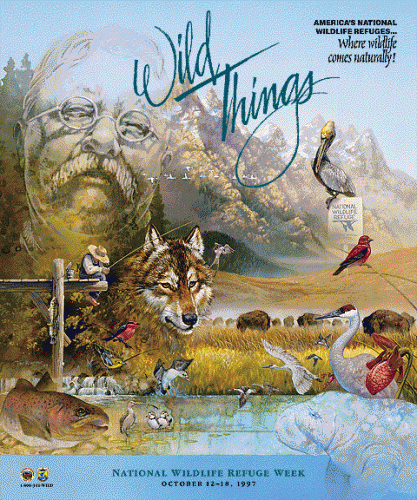It’s worthwhile for people who are spending time out of doors to learn about ticks and Lyme disease. Northeast states share this problem, and there are two solutions for it: prevent tick bites in people and lower the population of infected ticks by controlling the population of animals that are the largest source of Lyme disease (mice, our region’s Lyme generation machines) and deer (which, because of their abundance and mobility carry them too far and too wide). Lyme is transmitted through infected ticks which attach themselves to the bodies of mice, deer and other warm mammals, like us. Mice produce the bacteria that cause Lyme disease in human, though; deer are just carriers.
In a healthy forest environment the balance of ecology provides homes to the many different species of plants, insects, bird and wildlife, and each species exists in proportionate and harmonious balance. But in our region woodlands have been destroyed, and deer are directly responsible for the very recent, rapid and sharp decline in their health. Because there are way too many deer – up to 4 times the number our forests can support – there are too many of them feeding on the low growing vegetation which makes up the forest understory. This loss of vegetation is the first step in a degenerative cycle of woodland habitat destruction that leads to the overgrowth of opportunistic, invasive species like mice, deer and the “mile a minute” ivy that’s literally choking the life out of thousands of our trees. These invasions are symptoms of an unhealthy ecosystem.
This is how the cycle plays out: when there are too many deer in a forest, they eat up all of the young tree growth, plants and bushes which collectively are known as the understory. This means the loss of insects living in, on and from these plants plus the loss of the berries, seeds and nuts that some of them produce. Birds, reptiles and some small rodents need these food sources to survive. Deprived of them, they either abandon their homes for “greener pastures” or their populations simply fade away. With less of those small creatures, predators which consume them – like foxes and hunting birds – can’t get enough to eat either, and their populations too begin to disperse or dwindle. Some experts advocate getting rid of deer in order to get rid of ticks. Others say that it’s mice we need to worry most about.
For balance, I’d like to interject my friend Brenda Cummings’ comment about deer’s role in forest habitat destruction: “Unfortunately, humans didn’t really need much help from the deer while destroying the ecology of the planet.”
The mice will play!
What do the mice say? No predators? Wow! Fantastic conditions for growth of the versatile and highly adaptive mouse population. In a healthy ecosystem, native species either crowd out or eat up glutonnous invaders, but when there isn’t enough strength or numbers in the native ecosystem inhabitants to effectively combat opportunistic species’ intrusion and arrest their expansion, those species take advantage of symbiotic collaborations to expand rapidly. This is how ticks benefit from one such cycle:
Mice with their hot little bodies are great breeding grounds for ticks, and deer come into the tick encroachment picture as convenient conveyances for those little suckers. Due to a decline in natural predators from habitat destruction and hunting restrictions, the deer population has exploded. Ticks jump onto deer and catch free rides to the grassy fields and lawns where they wait to attach themselves to adults and children walking through – and infect a growing number of victims with Lyme disease. The presence of so many deer ensures that little understory vegetation will remain in forests: and this leads back to fewer insects, berries, nuts and seeds… Northern Woodlands Magazine tells us,
Foresters often have a front-row view of the damage “too many” deer can cause to the landscape. Wildflowers, such as trillium and showy lady’s slippers, can be especially hard hit. “Each adult white-tailed deer eats about 2,000 pounds a year,” says Charlie Fiscella, New York State chapter president of the Quality Deer Management Association “That’s one ton. Go out with clippers and see how long it takes you to clip one ton. It’s hard to do that, especially when the habitat is marginal.”
The Nature Conservancy is just finishing up a study finding that deer are one of the top threats to a healthy forest in New York State, and that oak and maple seedlings are a deer’s favored food source. Since woodlot owners and foresters are also fond of oaks and maples, the deer’s impact is deeply felt. As these commercially valuable hardwood species start disappearing, forest composition can be skewed to favor birch, beech, and hophornbeam.
When deer pressure is overwhelming, you get no seedling regeneration at all. This allows invasive species to fill the void and dominate the ecosystem. As the invasives grow, the deer continue to eat native plants and avoid the invasives, thus giving the invasives a perpetual advantage.
People who spend a lot of time in fields and woods understand how dangerous Lyme disease is and check for ticks carefully after each outdoor exposure, but suburban and city dwellers don’t know how important it is to do this. Lyme takes time to develop and doesn’t manifest itself right away, but it is a very serious illness with many long-term implications. Because ticks don’t move and their attachment doesn’t hurt, most people don’t know when one has attached to them until it’s become huge from eating, which can take a while. A tick should be removed before it has been attached for 24 hours, the time needed to infect a person with Lyme.
Bard College biology professor Felicia Keesing and scientist Richard S. Ostfeld of the Cary Institute of Ecosystem Studies, explain why mice are more dangerous in the tick transmittal cycle than are deer, and also why the most effective method for controlling the mouse population is promoting the health of a natural forest ecosystem and sufficient forest land.
… ticks are only dangerous if they are infected, and deer play no role in infecting ticks. Ticks become infected with the Lyme disease bacterium by feeding on small mammals such as white-footed mice, chipmunks, and shrews. And mice play the additional role of increasing tick survival — they are at the opposite extreme from opossums, which kill the vast majority of ticks they encounter. When our group compared the importance of deer, mice, and climate in determining the number of infected ticks over 13 years in southeastern New York State, mice were the winners hands down.
Other compelling reasons exist for controlling deer populations, such as reducing vehicle accidents and increasing forest regeneration. But, in many Lyme disease zones, reducing the deer herd is unlikely to substantially affect tick abundance. Reducing mice is more likely to be effective.
This is best accomplished by allowing natural predators like weasels, coyotes, foxes, and owls to do the job. And the best way to increase their numbers is to maximize the size of forest patches. A number of other ways of reducing risk are currently being tested by our group and others, including the use of natural products such as soil fungi to kill ticks without adverse environmental impacts and the use of vaccines against Lyme disease that can be delivered to wildlife.
The deer population is critical in New Jersey, where we have 40 deer per square mile in our forests. Rutgers University Cooperative Extension Agent Bruce Barbour explains, “When any woodland deer population exceed 20 deer per square mile, the forest become unsustainable. Deer denude the forests by eating away all of the understory vegetation, which includes young saplings that are meant to mature over time to replace aging or damaged trees in the forest canopy. The long term effect of understory destruction will be sparser forests, but the short term effect is immediate destruction of habitat for insects, birds and wildlife, and the health threat of an increase in Lyme disease.”
In the Dover, Massachussetts woods, 25 deer per square mile is enough to cause serious problems too. The Boston Globe reported,
In Dover, where the deer population is almost three times the levels recommended by state wildlife officials and cases of Lyme disease have increased sharply, officials last week lifted restrictions on bow hunting on some public land to begin the town’s first “deer culling.’’
The hunt is strictly regulated, and will probably harvest only about 50 deer. But in a region with limited affection for deer hunting, and doubts about its safety in well-traveled woods, it shows that personal health concerns are gaining the upper hand.
“Five years ago, we couldn’t have done this,’’ said Barbara Roth-Schechter, head of the town’s health board. “People would have shot it down. But there’s been an exponential increase in Lyme disease, and people are fed up.’’
Dover has expansive forests that have become overrun with deer, roughly 25 per square mile, and a surging rate of Lyme disease, a bacterial infection transmitted by tick bites.
Resources
Recommendations for avoiding tick bites from the Illinois Department of Public Health
Make your own, natural tick repellent with this recipe from eHow. But be careful, essential oils may not be healthy for cats, so check with your vet before using near them.
The Federal Government’s Centers for Disease Control and Prevention tick information page offers lots of good tips on how to avoid contact with ticks. They also advocate the use of DEET, a chemical repellant which has potential dangerous side effects – so maybe ignore that part.
How to remove a tick!
Not recommended: touching it with a hot match. Rather, use pointed tip tweezers near the tick’s head – where it attaches to your body – and keep pulling until it lets go and becomes detached. Then freeze that bad boy in case you need to produce it later for testing. This how-to video is a little gross, but can be really helpful in time of need. Webmd.com offers detailed written instructions for removal.



